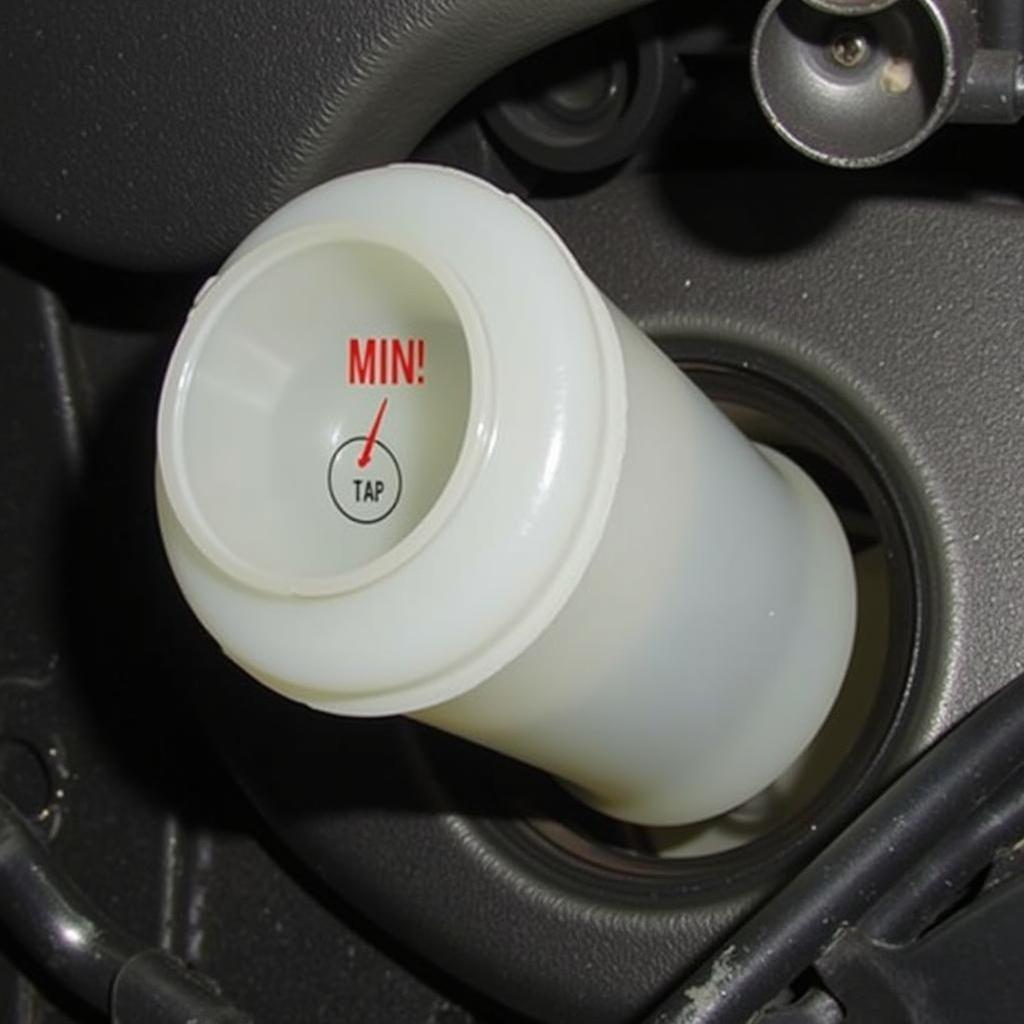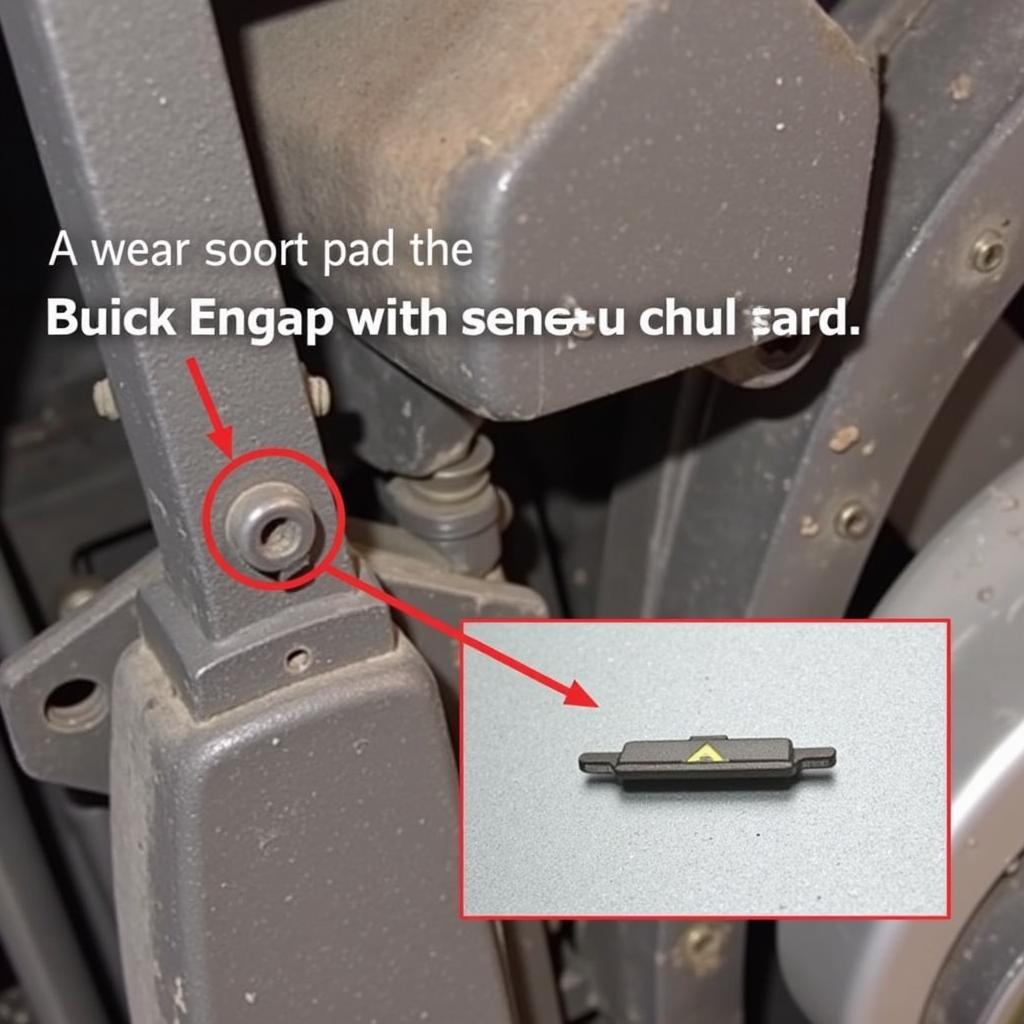The brake warning light on your 2009 Buick Enclave dashboard is a crucial safety feature. It illuminates to alert you of potential problems within your braking system. Ignoring this warning light could lead to brake failure and dangerous driving conditions. This article will guide you through the common causes of a 2009 Buick Enclave brake warning light and provide potential solutions.
Understanding Your Brake Warning Light
When you start your Enclave, the brake warning light should briefly illuminate, indicating the system is self-testing. If the light remains on or illuminates while driving, it’s crucial to address the issue promptly.
Common Causes of a 2009 Buick Enclave Brake Warning Light
Several factors can trigger the brake warning light on your 2009 Buick Enclave. Here are the most common culprits:
1. Low Brake Fluid
Brake fluid is the lifeblood of your braking system. It transmits the force from your foot on the brake pedal to the brake calipers, slowing or stopping your vehicle.
How to Check:
- Locate the brake fluid reservoir under the hood.
- Check the fluid level against the “Min” and “Max” markings on the reservoir.
Solution:
- If the fluid level is low, carefully add the recommended brake fluid type for your Enclave.
- Important: A significant drop in brake fluid usually indicates a leak, requiring immediate professional attention.
 Low Brake Fluid Reservoir
Low Brake Fluid Reservoir
2. Worn Brake Pads
Brake pads are designed to wear down over time. As you apply the brakes, the pads press against the brake rotors, creating friction to slow or stop your vehicle. When the pads wear thin, their ability to generate friction decreases, triggering the warning light.
How to Check:
- Visually inspect your brake pads through the wheel spokes. Look for a thin lining of friction material remaining on the pad.
- If you’re comfortable with car maintenance, you can remove a wheel to get a better view of the pad thickness.
Solution:
- Worn brake pads require immediate replacement. It’s recommended to replace all four pads at the same time to ensure even braking performance.
3. Faulty Brake Pad Sensor
Many modern vehicles, including the 2009 Buick Enclave, have brake pad wear sensors. These sensors are small metal tabs embedded within the brake pad material. As the pads wear down, the sensor eventually makes contact with the brake rotor, completing a circuit and triggering the warning light.
Solution:
- If your brake pad sensor is faulty or worn out, it will need to be replaced. This is typically done along with brake pad replacement.
 Brake Pad Wear Sensor
Brake Pad Wear Sensor
4. ABS Issue
The Anti-lock Braking System (ABS) prevents your wheels from locking up during hard braking, helping you maintain steering control. If your Enclave’s ABS system encounters a problem, it can trigger the brake warning light.
Solution:
- Diagnosing an ABS issue requires specialized diagnostic equipment. If you suspect an ABS problem, it’s crucial to have your vehicle inspected by a qualified mechanic.
5. Other Potential Issues
While less common, several other issues can trigger the brake warning light, including:
- Faulty brake caliper: A stuck brake caliper can cause uneven braking and premature pad wear.
- Damaged brake lines: Brake lines carry brake fluid from the master cylinder to the calipers. A leak in a brake line can lead to a loss of brake pressure.
- Master cylinder failure: The master cylinder is responsible for generating the hydraulic pressure that activates your brakes. A failing master cylinder can result in a soft or spongy brake pedal feel.
Troubleshooting a 2009 Buick Enclave Brake Warning Light
If your brake warning light illuminates, take the following steps:
- Safely pull over: Find a safe location to stop your vehicle.
- Check the parking brake: Ensure the parking brake is fully released.
- Inspect the brake fluid level: If the level is low, add fluid as needed. Be cautious and address any signs of a leak immediately.
- Listen for unusual noises: Pay attention to any grinding, scraping, or clicking sounds coming from the brakes.
- Avoid driving: If you suspect a serious issue or are uncomfortable diagnosing the problem yourself, do not drive your vehicle. Contact a qualified mechanic or tow your Enclave to a trusted repair shop.
When to Seek Professional Help
While some brake issues can be resolved with basic troubleshooting, it’s crucial to consult a qualified mechanic if:
- The brake warning light remains illuminated after adding brake fluid.
- You notice a leak in the brake system.
- Your brake pedal feels soft or spongy.
- You hear grinding or scraping sounds when applying the brakes.
- You experience a loss of braking power.
Attempting to diagnose or repair complex brake issues yourself can be dangerous.
Conclusion
The brake warning light on your 2009 Buick Enclave is a vital safety feature, alerting you to potential problems within your braking system. Addressing these issues promptly is crucial to ensure your safety and the safety of others on the road. While some issues may be simple to address, always err on the side of caution and consult a qualified mechanic if you’re unsure about the cause of the problem or how to fix it.

